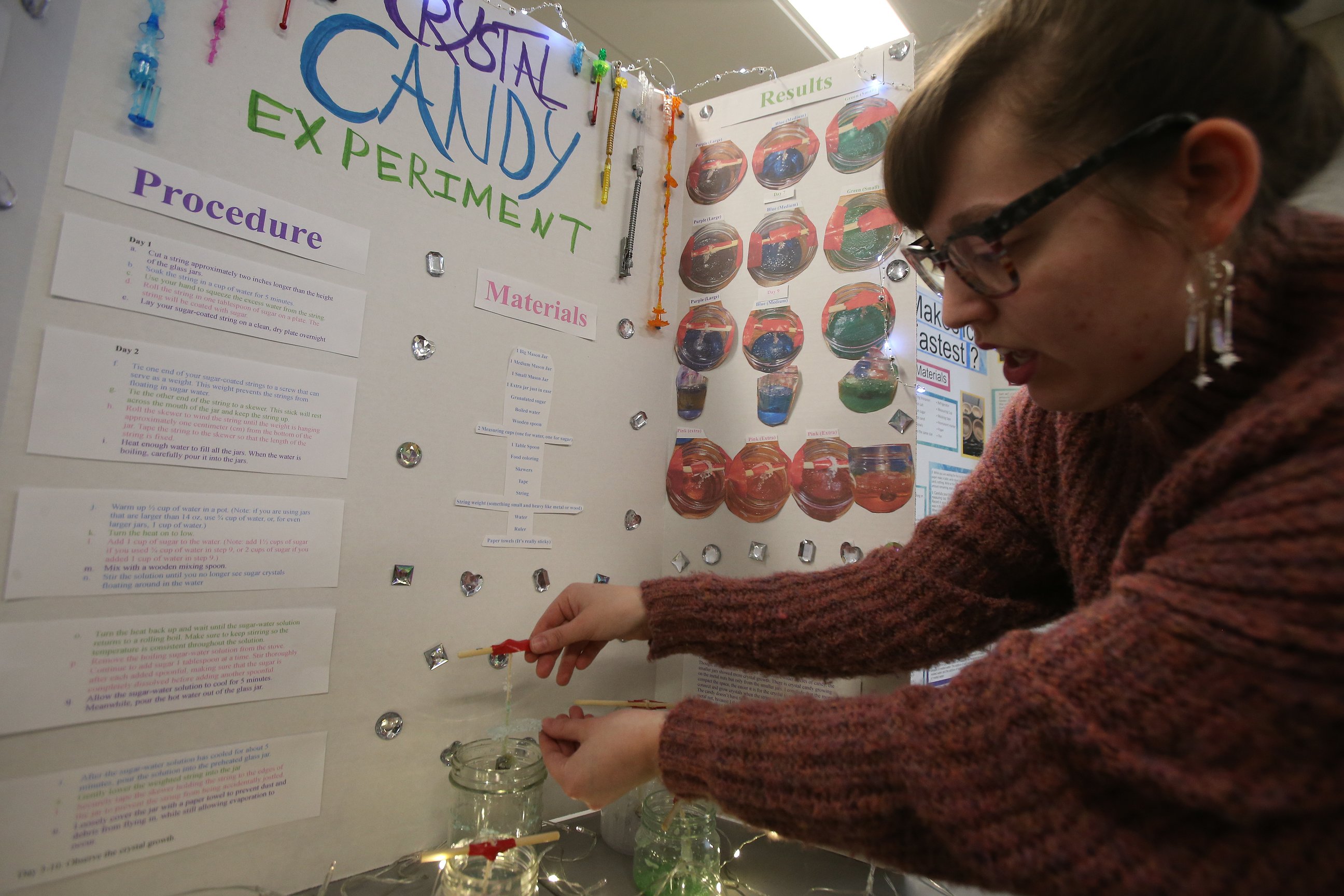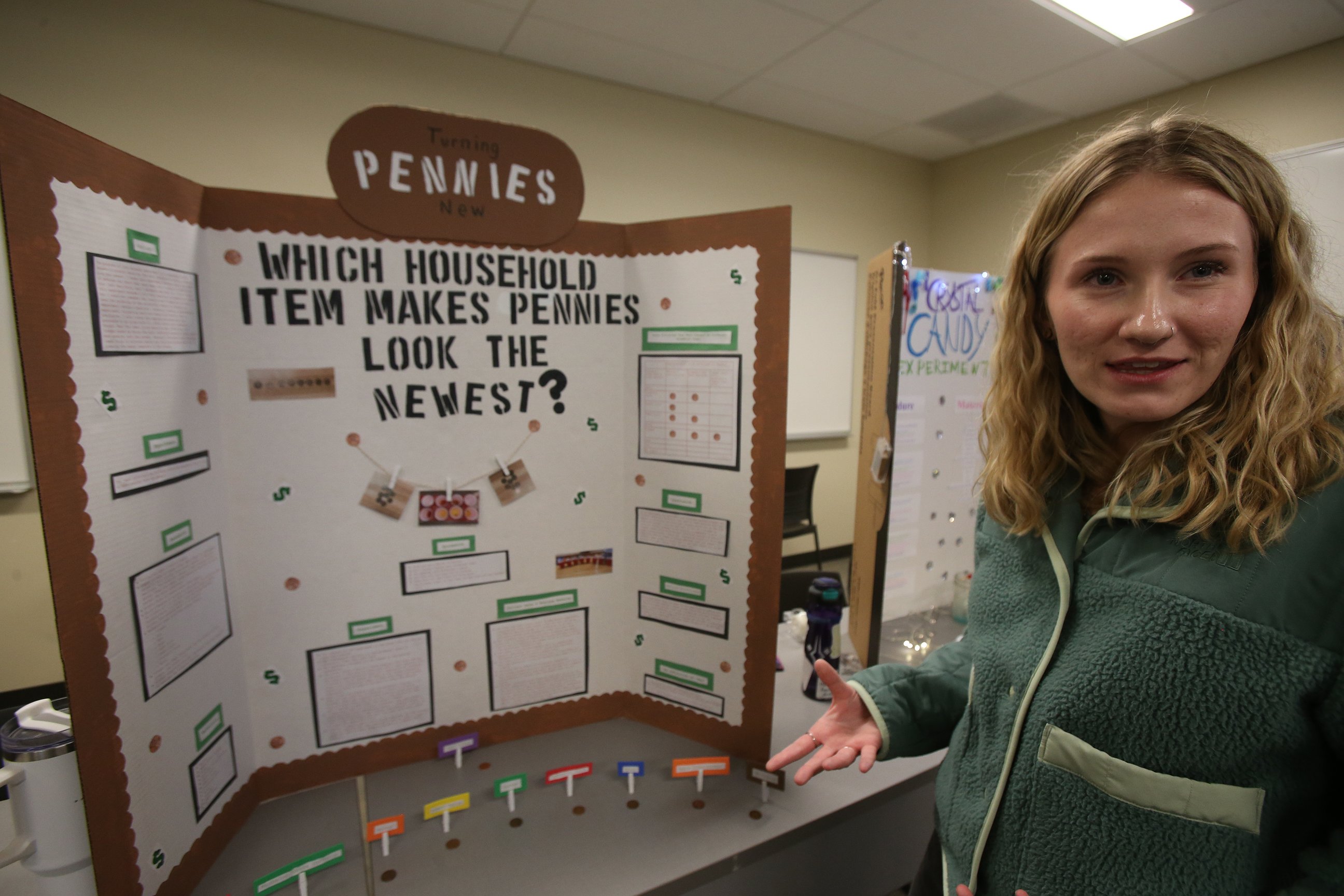University of Idaho elementary education students present projects during annual fair
COEUR d'ALENE — From pennies to plants and from crystals to chromatography, University of Idaho — Coeur d'Alene elementary education students presented a colorful spectrum of projects Tuesday during a science fair in the DeArmond Building at North Idaho College.
Allie Johnson, who will graduate in December 2025, named her experiment "Marker Chromatography."
“I took Kirkland paper towels, drew a 1-inch line on top of them and set them in a quarter cup of water,” she said. "The ink carried down the paper towel.”
She said she was intrigued by how far the different colors traveled and how the Crayola marker ink transformed the farther down it went.
“With brown, I figured it would be closer to the black, but it wasn’t. It traveled much farther, so that was interesting," Johnson said. "Why they travel farther is based on the polarity, so whether or not they’re at an even positive distribution or an even negative distribution over their molecules.”
This experiment provided an artistic exploration as well as a scientific one.
“I was expecting more yellow to show up in the green knowing that blue and yellow make green, but there’s no yellow in this," she said, pointing to one paper towel. "With purple, I expected the red and the blue, but it came out pink. With the brown, I never expected pink and purple. It was really interesting. It also connects complementary colors — no wonder pink and purple look good with brown, or blue and black.”
This was the second year for clinical professor of education Corey McKenna's students to participate in a science fair, which will come in handy when they have their own students someday soon. The fair served as a culmination of the students' science methods course in their teacher certification program.
“It’s really to simulate what they could potentially do with their own kiddos in their own schools,” McKenna said. “My big thing for them coming as new teachers is to be change agents, hoping to do some new things, bring in new ideas and new explorations in their schools.”
Johnson said she loved the science fair experience. She wants to work in a project-based education environment, where hands-on learners tend to thrive.
"It’s also nice to put yourself in the shoes of your students,” she said. “I think that’s something a lot of teachers forget. What if you were 7 and had to sit at a desk for six hours, or what if you were 7 and had to do this? I still needed help and I’m a 23-year-old woman. It definitely puts you in the place of your students to give empathy, a little more understanding to help problem solve, which is nice.”
Speaking of shoes, Ava Mendoza rocked bright pink shoelaces and galaxy sneakers as she spoke with judges and peers about her "Crystal Candy Experiment, a colorful presentation adorned with Lego trinkets and fairy lights.
Mendoza's goal was to see if container size had effect on how crystals form along a string dipped into sugar-saturated water. She expected them to crawl up the string, but they formed more horizontally than vertically
“The crystals formed outward rather than up and down. They formed more on the surface," she said. “It was pretty unexpected, but it’s still science either way."
As someone who was homeschooled, Mendoza said the science fair was a great insight into what her elementary students may experience when they are tasked with forming questions, collecting data and presenting information in this format.
"I’ve never actually done a science fair before, so I felt like what all the other kids must feel like doing this," she said. "It’s kind of stressful and it’s hard to choose what exactly you want to do.”
Emma McIntire, who will graduate fall 2025, conducted a classic experiment that ponders, "Which Household Item Makes Pennies Look the Newest?" She tried such liquids as tomato juice, Sprite and light beer to remove the coins' patina.
"This one is cranberry juice, and this one is apple cider vinegar," she said, showcasing the two shiniest coins in the display.
McIntire said she wants to travel after college. She has considered teaching abroad or remote options to allow her to see the world.
"I want to be a teacher, and I feel like if I can travel while I'm still young, I should do that," she said.





